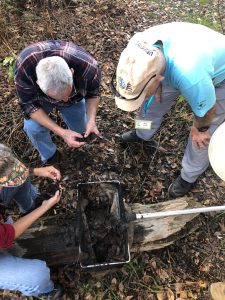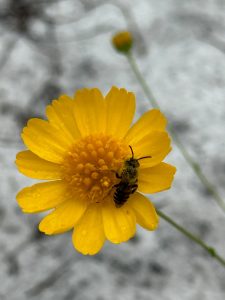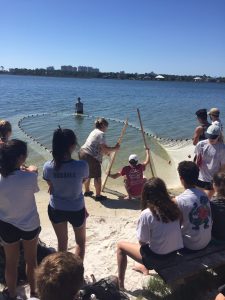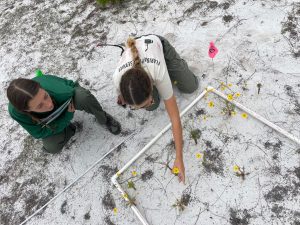
Field work is the heart and soul of any good research project in botany or wildlife ecology. When kids—heck, even most adults—picture a “scientist,” usually one of two images comes to mind. First will be the chemist in a full white lab coat and goggles, test tube in hand. The other—always the one I was drawn to—is the intrepid explorer, the “Crocodile Hunter” type who’s out exploring the wilds for the next undiscovered species. I have always been fully in the camp of the field biologist, happier with my feet in the water and covered in mud than in a pristine science lab.

Field research is no joke, though. Most projects require monitoring over the span of at least a year, which means you’re out in the elements during both the hottest and coldest times of the year. Earlier today, I worked in a cold, drizzly rain, droplets soaking my data sheets, with park rangers out at Big Lagoon State Park. We were looking at the use of native wildflowers by a rare bee, which only appears when the flowers bloom in mid-October. This short window of activity means we must drop what we are doing to conduct field monitoring early in the day while bees are active.

While technological advances like GPS units, digital water quality monitors, and drones have made field work easier and more precise, there are a few simple tools I’ve used over the years that still do the trick for studying fish and plant populations. One is a seine—a large net attached to wooden poles, dragged upright through the water to capture fish. For my master’s degree research, I used a 50’ seine—with the help of student volunteers—to capture, count, measure, identify, then release thousands of estuarine fish. Looking at habitat use for eighteen months meant I was out in the bay in waders during 15-degree days in January and crouching over the sand in the heat of August, counting juvenile pinfish in buckets.

For plant studies, one of the best tools is a simple meter square instrument made from PVC pipe, called a quadrat. Useful for determining population and “percent cover” of low-growing plant species, the frame is placed over a section of ground. Depending on the goals of the study, field researchers might count, identify, or observe particular features of each species growing within the square meter. Earlier today at Big Lagoon, we were only looking at one species, so we counted plants within the square and determined the condition of the flower blooms to help establish a timeline. We repeated this process multiple times within six different study plots. This type of research gives a snapshot of what is growing (and when) in a specific ecosystem. It is impossible to count every member of a population, so this sample data can be used to extrapolate population numbers for the larger region.
Field biology is not always pretty or comfortable, so it is wise to go into it with an upbeat, flexible attitude. Be prepared for any potential situation, as weather conditions can change on the fly. However, it is extremely rewarding to be out in remote places where few people go, and those experiences draw biologists back time and time again.
 12
12
